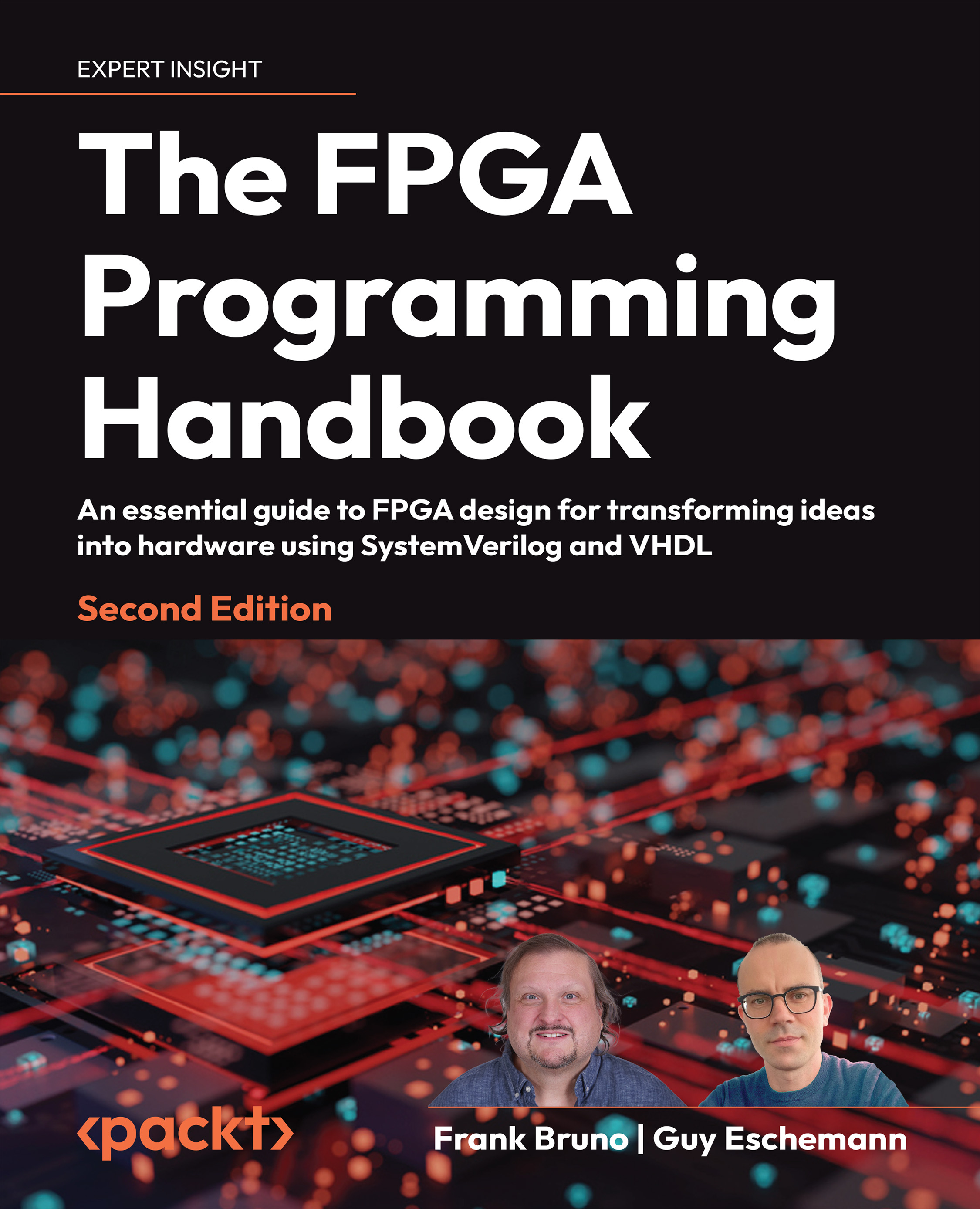Developing IPs – AXI-Lite, full, and streaming
We’ll look at how we can develop an IP through packaging it by defining the interfaces first:

Figure 8.37: Creating a new AXI4 peripheral
This is a way of creating an IP by creating a wrapper first and then inserting your IP:

Figure 8.38: Defining the IP
We’ll create a pdm_capture module that will have a register to trigger a read. We can then read back the same register to determine whether the read is completed. Data can then be read from a second register.
Note that the same limitations regarding VHDL apply here in that VHDL-2008 is not supported.

Figure 8.39: Default interface definition
The default interface definition is perfect for what we need. Select Next and make sure to select Edit IP to make sure that Package for IPI is selected under Compatibility as we did previously.
You can investigate the options and see that it is very easy to add any of...


























































